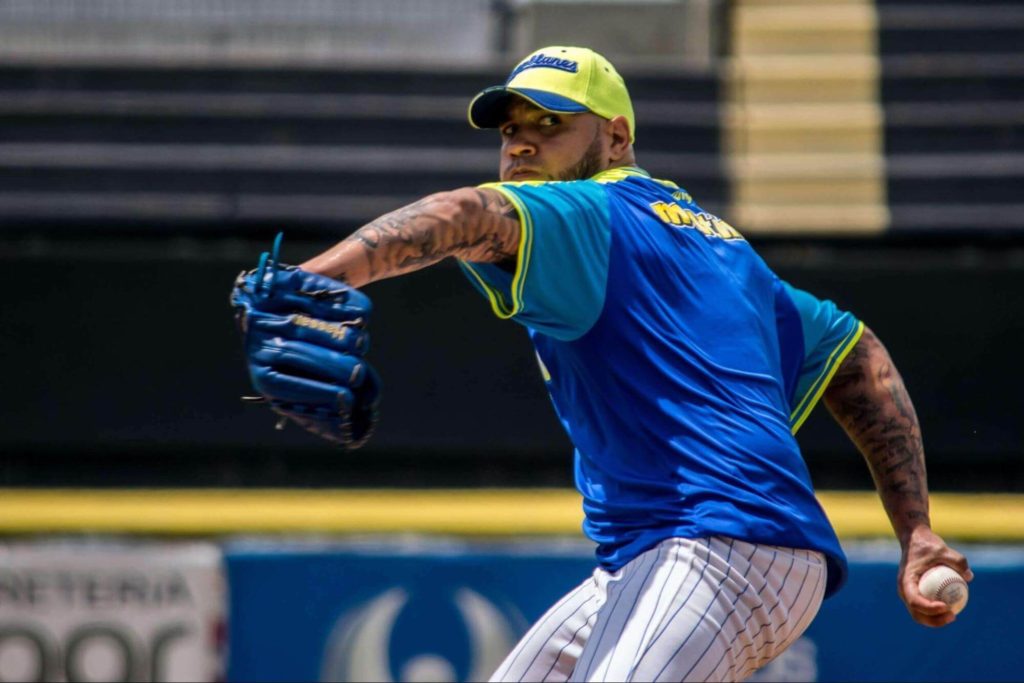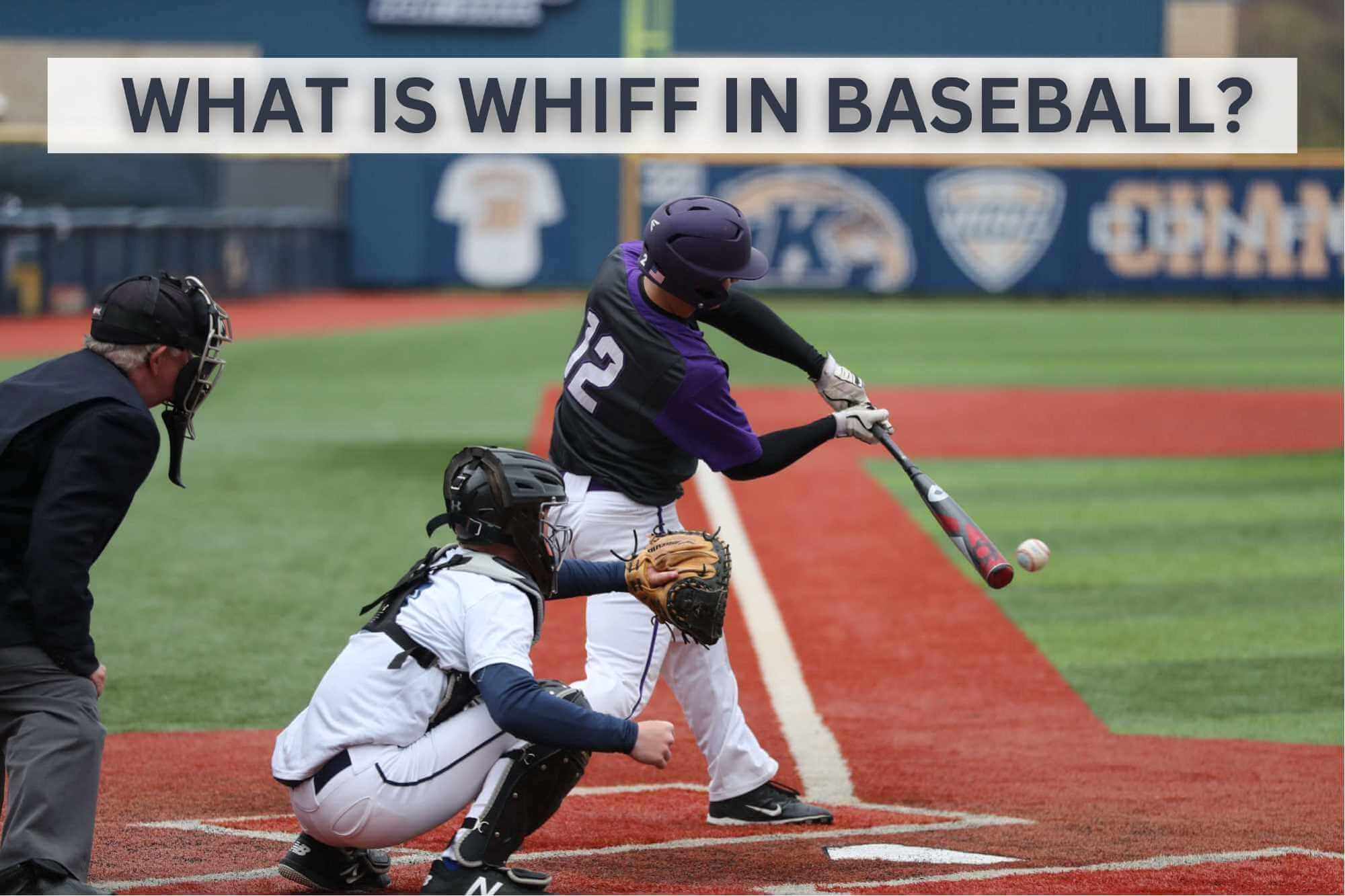Back in the day when I was a player, stepping up to the plate always felt exciting. The pitcher, the crowd, and the hope of hitting the ball just right were all there.
But let’s be real: not every swing led to cheers and high-fives. Sometimes, I’d swing big and miss. We call that a “whiff” in baseball.
Fast forward to now, as a coach, I see young players whiffing just like I used to. But that is okay. Every whiff is a chance to learn and improve.
If you wanna know “What is a whiff in baseball?” and “How to avoid it,” stay with me. Using my learning from years of playing and coaching, I will break it down for you. So, let’s get into it!
What Is Whiff in Baseball?
Simply put, a whiff in baseball means a swing and a miss. It is when a batter makes a strong swing at a pitch but fails to hit the ball.
Is it bad? Sure, as a batter, it is. But as a pitcher, getting a whiff can make you feel like a rock star.
I still remember my first strikeout as a pitcher, watching the batter take a hack and missing my curveball. But when I was the one holding the bat, a whiff was like a slap in the face.
You think you’ve got the pitch, and then – whoosh – the ball’s already past you and smacking into the catcher’s mitt. It’s a punch to the gut.
You start to think, “Was I too slow? Did I misjudge the pitch?” Doubt creeps in, and we all know that doubt can be a batter’s worst enemy.
For pitchers, hearing the umpire shout “Strike!” after a whiff is what you wanna hear. At that moment, you are not just one step closer to an out; you’ve messed with the batter’s head a little.
They start wondering what you’ll throw next, second-guessing their approach, making your job easier.
Your next pitch could be a curveball, a slider, or a fastball. But now the batter is under pressure, not you.
So, What Does It Mean to Whiff a Ball?
It’s when you swing at a pitch and don’t touch it. Plain and simple.
As a player, I felt the sting of whiffs, especially during crucial moments. It can be embarrassing.
But as a coach, I see a whiff differently. It’s a learning moment, both for pitchers and batters. Each swing and miss tells you about your technique, timing, and strategy. A whiff is an opportunity to grow. So learn from it.
What Is the Whiff Rate in Baseball?
- For Pitchers:
For pitchers, the whiff rate is a measure of how frequently they can make batters swing and miss. It shows the pitcher’s proficiency to trick batters. A high whiff rate often correlates with a high strikeout rate, which is good for pitchers.
- For Batters:
Conversely, a high whiff rate is a red flag for batters. It means they are not making solid contact and are more likely to strike out. In the world of baseball stats, this is one number you want to keep low.
How to Calculate Whiff Rate?
It’s simple math. The whiff rate is the number of swings and misses divided by the total number of swings.
Whiff Rate = Total Number of SwingsNumber of Swings and Misses
Multiply by 100, and you get the whiff rate percentage.
Whiff Rate Percentage = Total Number of SwingsNumber of Swings and Misses100
So, if a batter has 10 swings and misses three times, their whiff rate would be 310 or 30%.
What Is a Bad Whiff Percentage?
A high whiff percentage for a batter usually indicates trouble. Anything above 30% is generally considered high and warrants some concern.
It’s a sign that the batter is struggling to make contact with the ball. It could be possibly due to poor timing, lack of focus, or even facing a particularly skilled pitcher.
For pitchers, the story is somewhat different. A low whiff rate could mean that their pitches are too easy to read or lack the kind of movement that confuses batters.
So, we can say a higher whiff percentage is better for pitchers. For batters, lower is better.
Impact of Whiff in a Game
Whiffs are game-changers, literally. A well-timed whiff can be the difference between a win and a loss for pitchers. It can end an inning, strand runners on base, and swing momentum in their team’s favor.

For batters, a whiff can be intimidating. It’s a missed opportunity that can affect the score, and so does the team morale.
Strategies to Reduce Whiffs
You wanna reduce those whiffs? During my playing days and even more so as a coach, I have learned a few things that can help. Here’s the playbook:
For Pitchers:
- Improve Your Grip: A better grip can add more spin and movement to your pitches.
- Master Control: Good control can put the ball where the batter least expects it. This will make it harder for them to make solid contact.
- Study the Batters: Know their weak spots, and you’ll know where to pitch. Simple but effective.
- Vary Pitches: Being predictable is a no-no. Change your pitches to keep batters guessing. It will help to increase the chances of whiffing.
- Work on Your Timing: Nail your timing, and you’ll throw the batter’s own timing off. Trust me, it works.
- Work on Off-Speed Pitches: A well-executed changeup or curveball can make even the best batters whiff. Learn them and use them.
For Batters:
- Timing is Everything: Poor timing is among the most common reasons for whiffs. In practice, we rehearse drills like soft toss and batting tee exercises to improve timing. Don’t forget to learn how to hold the bat.
- Improve Your Swing: A better swing can help you make better contact with the ball.
- Keep Your Eye on the Ball: It sounds basic, but you’d be surprised how many people forget this. Watch that ball all the way in.
- Watch the Pitcher: Know their go-to moves. Understand: Is the pitcher likely to throw a fastball on a 3-2 count? Does he always start with a breaking ball? If you can predict their pitch, you can prepare your swing.
- Keep Practicing: The more you learn, the better you will reduce the chance of whiffing.
What Is the Difference Between a Swinging Strike and a Whiff?
This is a common question, even among seasoned players.
So, all whiffs are swinging strikes, but not all swinging strikes are whiffs. Also, both are important, but whiffs carry more weight because they result in an out.
A “swinging strike” is when you take a swing at any pitch and miss. Doesn’t matter what the count is – could be the first pitch or the fifth, but if you swing and don’t hit the ball, that’s a swinging strike.
But a “whiff” refers to the third strike that sends you walking back to the dugout.
So, how do these two relate? Easy. All whiffs are swinging strikes, but not all swinging strikes are whiffs.
And why does it matter? Whiffs matter more because they actually get you out. A swinging strike might be a mistake, but you often get another chance. A whiff? That’s game over, at least for that at-bat.
So, swinging strikes can happen anytime, but whiffs are the big ones that turn you from a hopeful batter into a viewer.
Pitchers With the Most Strikeouts in Baseball
If you’re a baseball fan, you would probably be familiar with names like Nolan Ryan, Roger Clemens, and Randy Johnson.
These pitchers have the most strikeouts. Their secret weapon is a high whiff rate. They have mastered the art of making batters miss, which is why they’re among the elite. Let’s look at the top 15 pitchers with the most strikeouts in baseball.
1. Nolan Ryan – 5,714 Strikeouts
The king of strikeouts. With a blazing fastball, Nolan Ryan tops the list. He also holds the record for the most no-hitters. His longevity in the game is also impressive; he played for 27 seasons!

2. Randy Johnson – 4,875 Strikeouts
The “Big Unit” was intimidating. His 6’10” height and power made him a strikeout machine. He’s second on the all-time list with over 100 mph fastball.
3. Roger Clemens – 4,672 Strikeouts
Clemens had power and precision. He played for various teams, including the Red Sox and Yankees. He ranks third and has a legendary career.
4. Steve Carlton – 4,136 Strikeouts
Steve Carlton was famous for his slider. He could fool batters easily and had four Cy Young Awards to prove it.
5. Bert Blyleven – 3,701 Strikeouts
Known for his curveball, Bert sits in fifth place. His pitches often left batters scratching their heads.
6. Tom Seaver – 3,640 Strikeouts
Seaver was all about finesse. He mixed his pitches well and is on the sixth spot.
7. Don Sutton – 3,574 Strikeouts
Consistency was Sutton’s game. He struck out batters steadily over a long career. He had a variety of effective pitches.
8. Gaylord Perry – 3,534 Strikeouts
Perry was crafty. He was known for his “spitball,” a pitch now illegal. He had a long, illustrious career. He’s eighth on the list, and he got there with smarts as much as power.
9. Walter Johnson – 3,508 Strikeouts
An old-timer but a good one. Johnson dominated in his era (early 20th century), making batters whiff a lot. He had a unique sidearm delivery.
10. Greg Maddux – 3,371 Strikeouts
Maddux had control like no other. He may be tenth in strikeouts, but his skill was top-notch. He won multiple Cy Young Awards.
11. Max Scherzer – 3,367 Strikeouts
Scherzer is still active and climbing the list. He is known for his intensity and variety of pitches. His strikeout numbers could go even higher.
12. Phil Niekro – 3,342 Strikeouts
The knuckleball king. Niekro confused batters with his hard-to-hit pitch.
13. Justin Verlander – 3,324 Strikeouts
Another active player. Verlander’s fastball is his claim to fame. He’s a former MVP and Cy Young winner.
14. Fergie Jenkins – 3,192 Strikeouts
Jenkins had a great career, mixing pitches to puzzle batters. He had a great fastball and curveball. He ranks 14th for a reason. He’s a Hall of Famer who played for the Cubs and other teams.
15. Pedro Martinez – 3,154 Strikeouts
Pedro’s fastballs and change-ups fooled many, earning him the 15th spot. He’s a three-time Cy Young winner.
| Top 15 Pitchers With the Most Strikeouts in Baseball Career | ||
| Names | Strikeouts | Ranks |
| Nolan Ryan | 5714 | 1st |
| Randy Johnson | 4875 | 2nd |
| Roger Clemens | 4672 | 3rd |
| Steve Carlton | 4136 | 4th |
| Bert Blyleven | 3701 | 5th |
| Tom Seaver | 3640 | 6th |
| Don Sutton | 3574 | 7th |
| Gaylord Perry | 3534 | 8th |
| Walter Johnson | 3508 | 9th |
| Greg Maddux | 3371 | 10th |
| Max Scherzer | 3367 | 11th |
| Phil Niekro | 3342 | 12th |
| Justin Verlander | 3324 | 13th |
| Fergie Jenkins | 3192 | 14th |
| Pedro Martinez | 3154 | 15th |
Frequently Asked Questions (FAQs) About What is Whiff in Baseball
1. Why is it called whiffing?
The term “whiffing” likely comes from the sound of the ball whooshing past the bat when the batter swings and misses.
2. What does whiff mean in golf?
In golf, a whiff is when you swing at the ball and totally miss. It counts as a stroke on the scorecard even though you didn’t hit the ball.
3. What does whiff mean in soccer?
A “whiff” occurs in soccer when a player attempts to kick the ball but misses it completely. This can happen during a shot on goal, a pass, or a clearance. It can lead to losing possession or even a scoring opportunity for the opposing team.
4. What does a whiff in boxing mean?
If you throw a punch and miss in boxing, that’s a whiff. It is a moment that leaves the boxer vulnerable to counter-attacks. Missing a punch often results in losing balance and an open defense.
5. What does whiff mean in hockey?
In hockey, a whiff is missing the puck when you try to hit it. This can be bad news because you might lose control of the puck, giving the other team a chance to score.
My Opinion on Baseball Whiffs
For me, who has been on both sides, as a player and a coach, a whiff is exciting. It’s a moment of pure competition between pitcher and batter.
In my years of coaching, I always tell my players that baseball is a game of failure. Even the best hitters fail seven out of ten times.
A whiff doesn’t define you; it’s a chance to learn. Ask yourself: why did you miss it? Did you swing too early? Did the spin fool you? Use that insight to adapt and prepare for the next throw.
And for my pitchers, a whiff is a sign that you’ve done something right, but the game’s not over. Keep your focus and continue to keep those batters on their toes.
So, next time, whenever you hear the shout, “Whiff!” don’t cringe. It’s not entirely about missing the ball. But about the strategy, the psychology, and the continuous drive to get better.
Keep swinging, keep pitching, and never stop loving the game. Catch you on the field!
More Resources
What Is A Pinch Hitter In Baseball
What Is Chin Music In Baseball

Hello everyone. My name is Jason Butler, and I live in California, America. I was a professional AAA Minor League Baseball player. I lost my chance of playing MLB for injury issues, but I did not lose my love for baseball. I attended the coaching training program and am now working as a coach in a small school in San Diego.
I always love to share my experience and knowledge if that can help you. Play baseball, and stay fit.
